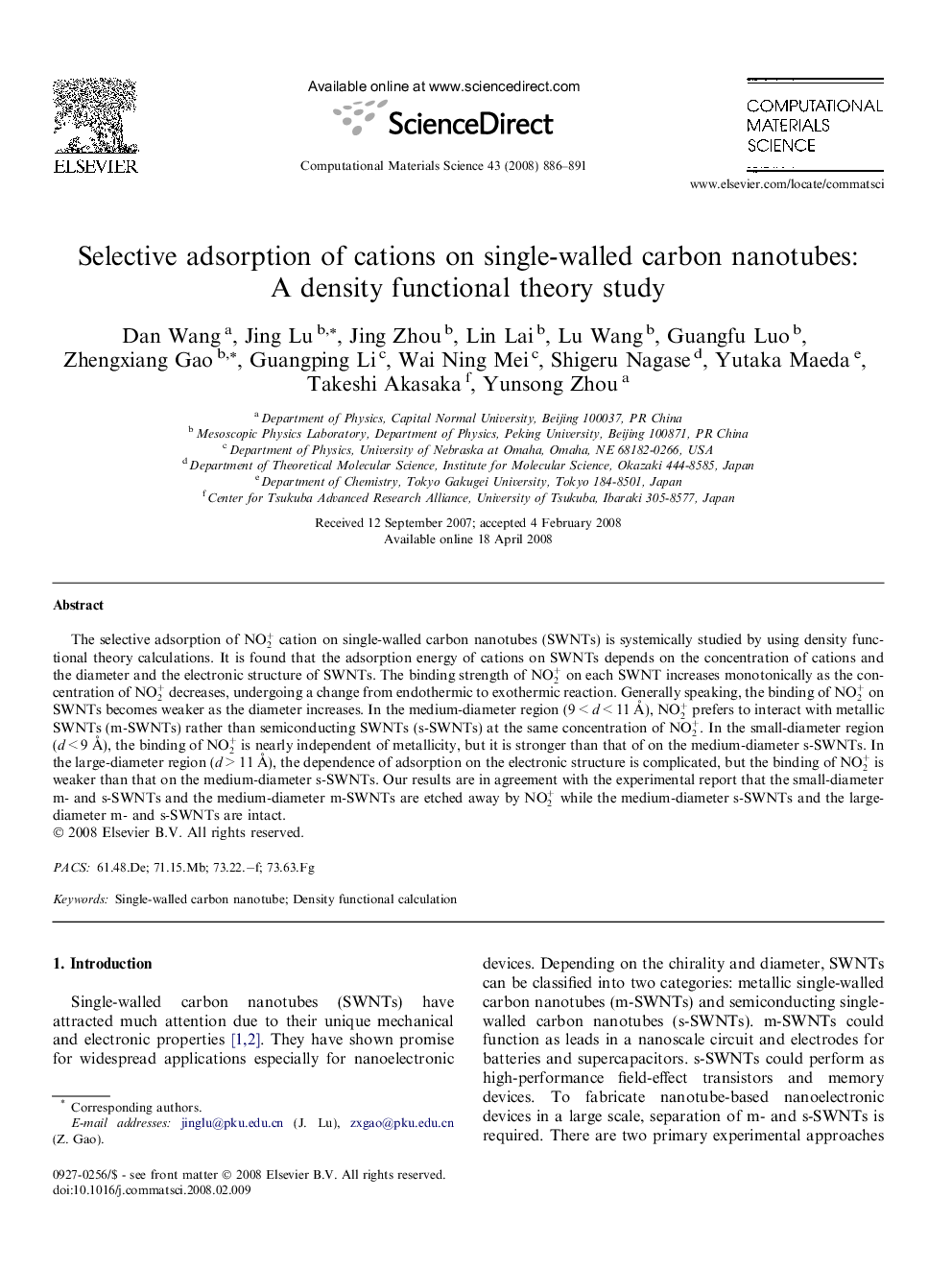| Article ID | Journal | Published Year | Pages | File Type |
|---|---|---|---|---|
| 1563302 | Computational Materials Science | 2008 | 6 Pages |
Abstract
The selective adsorption of NO2+ cation on single-walled carbon nanotubes (SWNTs) is systemically studied by using density functional theory calculations. It is found that the adsorption energy of cations on SWNTs depends on the concentration of cations and the diameter and the electronic structure of SWNTs. The binding strength of NO2+ on each SWNT increases monotonically as the concentration of NO2+ decreases, undergoing a change from endothermic to exothermic reaction. Generally speaking, the binding of NO2+ on SWNTs becomes weaker as the diameter increases. In the medium-diameter region (9 < d < 11 Ã
), NO2+ prefers to interact with metallic SWNTs (m-SWNTs) rather than semiconducting SWNTs (s-SWNTs) at the same concentration of NO2+. In the small-diameter region (d < 9 Ã
), the binding of NO2+ is nearly independent of metallicity, but it is stronger than that of on the medium-diameter s-SWNTs. In the large-diameter region (d > 11 Ã
), the dependence of adsorption on the electronic structure is complicated, but the binding of NO2+ is weaker than that on the medium-diameter s-SWNTs. Our results are in agreement with the experimental report that the small-diameter m- and s-SWNTs and the medium-diameter m-SWNTs are etched away by NO2+ while the medium-diameter s-SWNTs and the large-diameter m- and s-SWNTs are intact.
Keywords
Related Topics
Physical Sciences and Engineering
Engineering
Computational Mechanics
Authors
Dan Wang, Jing Lu, Jing Zhou, Lin Lai, Lu Wang, Guangfu Luo, Zhengxiang Gao, Guangping Li, Wai Ning Mei, Shigeru Nagase, Yutaka Maeda, Takeshi Akasaka, Yunsong Zhou,
